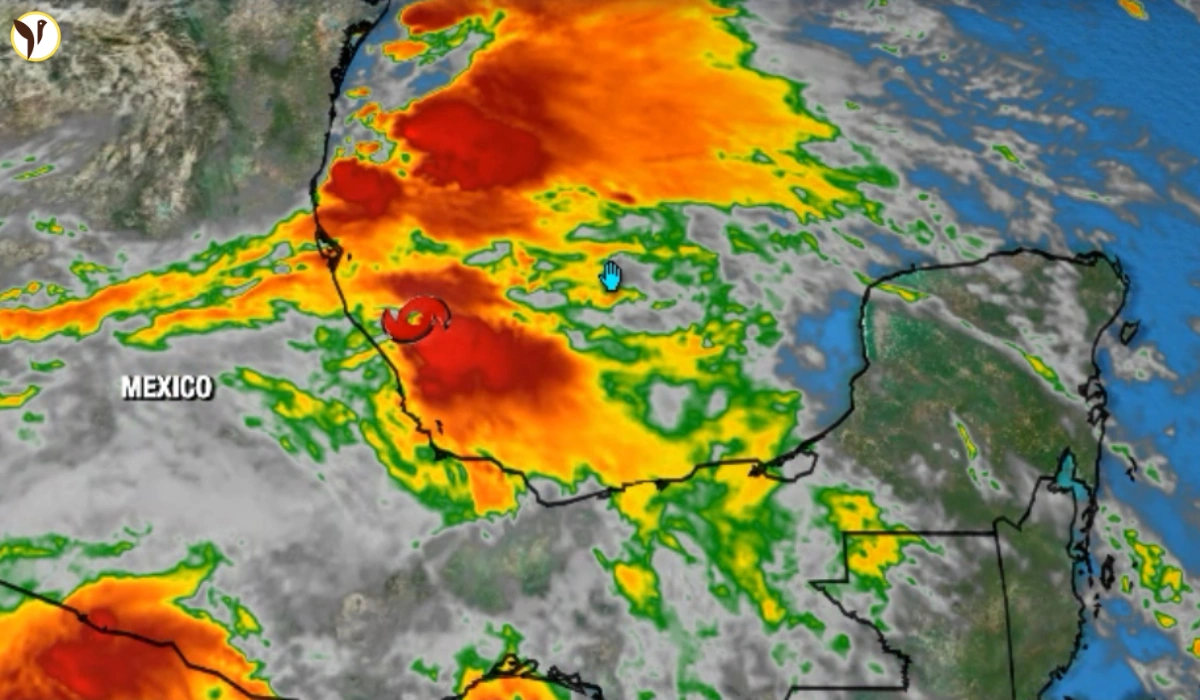On Sunday evening, Tropical Storm Barry made landfall in eastern Mexico after forming in the Bay of Campeche on June 29. Barry made landfall near Tampico, Veracruz, with strong winds and heavy rain located near the storm center before weakening in strength as it moved inland.
Maximum winds were estimated to have reached 45 mph and fell rapidly, primarily due to the storm encountering the mountains in Mexico.
The storm prompted tropical storm warnings along the Gulf Coast, stretching from Boca de Catan to Tecolutla. Barry was expected to dump 3 to 6 inches of rain on some areas of Veracruz, Tamaulipas, and San Luis Potosí.
Some isolated areas might see up to 10 inches of rain. Local authorities cautioned about flash flooding and mudslides in those areas, especially in areas prone to floods like hilly or mountainous terrain.
Local emergency teams were in alert mode, and residents in vulnerable areas were on notice. While the system is now a tropical depression, the rain presents its own threat to the area.
As of Monday, Barry was forecasted to completely break apart as it moves inland across central Mexico.
TD2 has become Tropical Storm #Barry. Although the storm remains poorly organized due to a suboptimal environment, a small region of 40-45 mph winds has developed to the NE of the storm's center as measured by @53rdWRS.
— Dr. Levi Cowan (@TropicalTidbits) June 29, 2025
Barry will make landfall in #Mexico near or south of… pic.twitter.com/DLgr32umKd
U.S. May See Rain as Barry’s Moisture Moves North
Though Tropical Storm Barry won’t impact the United States itself, its moisture could impact parts of southern Texas.
Meteorologists are suggesting cities like Houston could see some scattered rain ongoing until Monday since Barry’s outer bands are tracking north.
Although the storm itself is no longer an overall concern for the United States, the moisture caused by Barry could lead to brief heavy showers in southern Texas. Flash flooding is not yet predicted in Texas today but the National Weather service is requiring residents remain aware of the changing conditions.
In Texas, we would recommend residents especially be vigilant in low-lying areas.
Meanwhile, on Mexico’s Pacific Coast, another system is developing called Tropical Storm Flossie. While Flossie is not related to Barry, it could lead to more rain and likely landslides in parts of southern Mexico.
Weather officials all across the region are encouraging vigilance through official weather channels as the Atlantic Hurricane Season continues. As storm development is possible in the coming weeks, time is of the essence in preparing for storms and resourcing information surrounding them.


/content/stories/thumb/thumb691acf48cceef7.90710965.webp)
/content/stories/thumb/thumb691abf43d9ee95.26593830.webp)
/content/stories/thumb/thumb691ab5532e24c1.34805318.webp)
/content/stories/thumb/thumb691aab78a89ce4.88679144.webp)
/content/stories/thumb/thumb69184c813c8444.34590724.webp)


